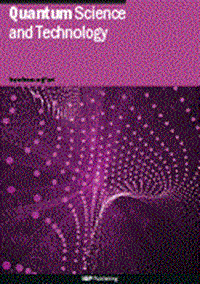State-agnostic approach to certifying electron–photon entanglement in electron microscopy
IF 5
2区 物理与天体物理
Q1 PHYSICS, MULTIDISCIPLINARY
引用次数: 0
Abstract
Transmission electron microscopes (TEMs) enable atomic-scale imaging and characterisation, driving advances across fields from materials science to biology. Quantum correlations, specifically entanglement, may provide a basis for novel hybrid sensing techniques to make TEMs compatible with sensitive samples prone to radiation damage. We present a protocol to certify entanglement between electrons and photons naturally arising from certain coherent cathodoluminescence processes. Using mutually unbiased bases in position and momentum, our method allows robust, state-agnostic entanglement verification and provides a lower bound on the entanglement of formation, enabling quantitative comparisons across platforms. Simulations under experiment-inspired conditions and preliminary experimental data highlight the feasibility of implementing this approach in modern TEM systems with optical specimen access. Our work integrates photonic quantum information techniques with electron microscopy. It establishes a foundation for entanglement-based imaging at the atomic scale, offering a potential pathway to reduce radiation exposure.电子显微镜中证明电子-光子纠缠的状态不可知方法
透射电子显微镜(tem)实现了原子尺度的成像和表征,推动了从材料科学到生物学等各个领域的进步。量子相关,特别是纠缠,可以为新型混合传感技术提供基础,使tem与容易受到辐射损伤的敏感样品兼容。我们提出了一个协议,以证明电子和光子之间的纠缠自然产生的某些相干阴极发光过程。利用位置和动量的相互无偏基础,我们的方法允许鲁棒的、状态不可知的纠缠验证,并提供地层纠缠的下限,从而实现跨平台的定量比较。在实验启发条件下的模拟和初步实验数据强调了在具有光学样品访问的现代TEM系统中实现该方法的可行性。我们的工作将光子量子信息技术与电子显微镜相结合。它为原子尺度上基于纠缠的成像奠定了基础,提供了减少辐射暴露的潜在途径。
本文章由计算机程序翻译,如有差异,请以英文原文为准。
求助全文
约1分钟内获得全文
求助全文
来源期刊

Quantum Science and Technology
Materials Science-Materials Science (miscellaneous)
CiteScore
11.20
自引率
3.00%
发文量
133
期刊介绍:
Driven by advances in technology and experimental capability, the last decade has seen the emergence of quantum technology: a new praxis for controlling the quantum world. It is now possible to engineer complex, multi-component systems that merge the once distinct fields of quantum optics and condensed matter physics.
Quantum Science and Technology is a new multidisciplinary, electronic-only journal, devoted to publishing research of the highest quality and impact covering theoretical and experimental advances in the fundamental science and application of all quantum-enabled technologies.
 求助内容:
求助内容: 应助结果提醒方式:
应助结果提醒方式:


